The Cessna 172N Parts Manual is a comprehensive guide for maintenance, repairs, and parts identification, ensuring safety and compliance with factory standards and regulations.
1.1 Overview of the Cessna 172N Aircraft
The Cessna 172N Skyhawk is a single-engine, four-seat aircraft renowned for its reliability and ease of handling. Produced from 1977 to 1986, it features a Lycoming O-320-H2AD engine, delivering 160 horsepower. Known for its forgiving nature, the 172N is widely used in flight training and private aviation. Its durable design, electric flaps, and consistent performance make it a popular choice for pilots worldwide. This model embodies Cessna’s commitment to safety, efficiency, and accessibility in general aviation.
1.2 Importance of the Parts Manual for Maintenance and Repair
The Cessna 172N Parts Manual is essential for accurate maintenance and repair, ensuring compliance with factory specifications and safety standards. It provides detailed diagrams, part numbers, and descriptions, enabling technicians to identify and replace components correctly. Regular updates and adherence to the manual prevent errors, ensuring the aircraft remains airworthy. Proper use of the manual also aids in troubleshooting, reduces downtime, and maintains the aircraft’s performance and reliability, making it a critical resource for owners and mechanics.
1.3 Structure and Organization of the Manual
The Cessna 172N Parts Manual is meticulously organized into clear sections, covering aircraft components, part numbers, and diagrams. It includes detailed illustrations and descriptions for easy identification. The manual is divided into chapters, each focusing on specific systems like engine, airframe, and avionics. Electronic versions feature bookmarks and search functions for quick access. Annual updates ensure the manual remains current, reflecting the latest technical changes. This structured approach allows users to locate information efficiently, making it an indispensable tool for maintenance and repair activities.
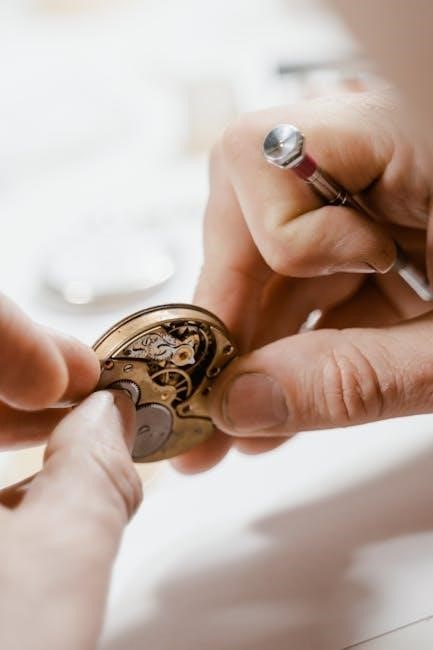
Engine Specifications and Components
The Cessna 172N is powered by the Lycoming O-320-H2AD engine, producing 160 HP at 2700 RPM. It features a carbureted, air-cooled design with dual magnetos and spark plugs.
2.1 Lycoming O-320-H2AD Engine Overview
The Lycoming O-320-H2AD engine powers the Cessna 172N, delivering 160 horsepower at 2700 RPM. This four-cylinder, horizontally opposed, air-cooled engine features a carbureted design with dual magnetos for reliable ignition. It utilizes a direct-drive system, eliminating the need for a propeller reduction gearbox. The engine is equipped with eight spark plugs, two per cylinder, ensuring efficient combustion. Designed for durability, the O-320-H2AD is widely used in general aviation, offering a balance of performance, fuel efficiency, and reliability. Regular maintenance is essential to uphold its operational integrity and longevity.
2.2 Engine Parts and Accessories
The Cessna 172N’s Lycoming O-320-H2AD engine comprises critical components, including magnetos, spark plugs, and a carburetor for fuel delivery. The engine features an air-cooled system, eliminating the need for a coolant system, and includes an oil sump, oil pump, and filter for lubrication. Accessories such as the starter, alternator, and vacuum pump are integral to engine operation. The engine mount and vibration dampeners ensure smooth performance. Genuine Cessna parts are essential for maintaining engine reliability and adherence to factory specifications, as outlined in the parts manual.
2.3 Engine Maintenance and Service Intervals
Regular maintenance is crucial for the Lycoming O-320-H2AD engine’s longevity. Oil changes are recommended every 50 hours, with spark plug replacements every 100 hours. Annual inspections include checking magneto timing and spark plug condition. Compression tests ensure cylinder health, while air filter cleaning and replacement are needed every 50 hours. Adhering to these intervals, as outlined in the manual, prevents premature wear and ensures reliable engine performance. Proper maintenance also includes inspecting belts and hoses for wear, ensuring optimal functionality and safety.

Airframe and Structural Components
The Cessna 172N’s airframe features a durable fuselage and wing structure, with key components like control surfaces and landing gear ensuring safe and efficient flight operations.
3.1 Fuselage and Wing Structure
The Cessna 172N’s fuselage is constructed from durable aluminum alloys, providing strength and stability. The wing structure features a high-lift design, with a single strut supporting each wing. This configuration enhances stability and control during flight. The fuselage and wings are designed for optimal aerodynamic performance, ensuring efficient fuel use and smooth handling. Regular maintenance, as outlined in the parts manual, ensures structural integrity and safety. The wing’s internal framework includes spars and ribs, which distribute stress evenly, while the fuselage is designed to withstand various flight conditions and landings. Proper inspection and maintenance of these components are essential for continued airworthiness.
3.2 Control Surfaces and Flaps
The Cessna 172N’s control surfaces include ailerons, elevators, and rudder, designed for precise flight control. Flaps are single-slot and electrically operated, with detents at 0°, 10°, 20°, 30°, and 40°. These components are crucial for maneuverability and landing performance. The parts manual details their maintenance, including inspections for wear and proper alignment. Lubrication of hinges and linkages is essential to ensure smooth operation. Any damage or malfunction must be addressed promptly to maintain aircraft safety and handling characteristics, as specified in the manual.
3.3 Landing Gear and Related Components
The Cessna 172N features a fixed tricycle landing gear system, designed for stability and durability. The main and nose gear are equipped with oleo-pneumatic shock absorbers for smooth landings. Components include wheels, brakes, and axles, with the nose gear incorporating a steering mechanism. Regular maintenance involves lubrication of pivot points and inspection of tires and brakes. The parts manual outlines procedures for replacing worn or damaged parts, ensuring compliance with airworthiness standards. Proper care of the landing gear is critical for safety and structural integrity during ground operations and landings.
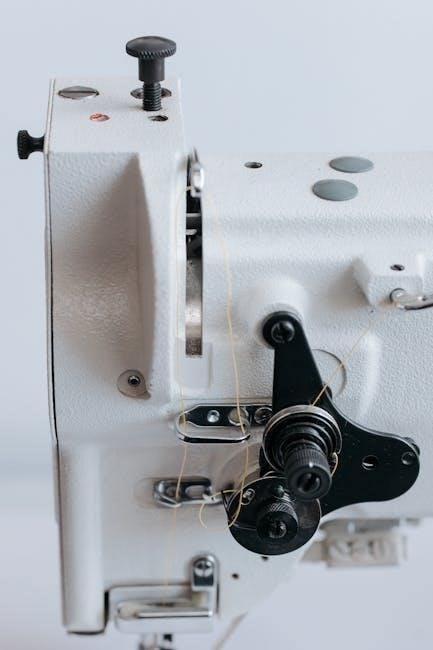
Avionics and Electrical Systems
The Cessna 172N’s avionics and electrical systems include communication, navigation, and electrical components. The manual details wiring diagrams, circuit breakers, and avionics installation procedures for safe maintenance and upgrades.
4.1 Communication and Navigation Equipment
The Cessna 172N Parts Manual details the communication and navigation systems, including transponders, GPS units, and VHF radios. These systems are essential for safe flight operations and compliance with aviation regulations. The manual provides schematics, part numbers, and installation guidelines for avionics components, ensuring proper functionality. It also covers maintenance procedures for antennas, audio panels, and navigation instruments, emphasizing the importance of regular checks to prevent signal loss or system failure during flight. Proper upkeep ensures reliable communication and navigation, critical for pilot safety and efficient flight planning.
4.2 Electrical System Components and Wiring
The Cessna 172N Parts Manual provides detailed schematics and diagrams of the electrical system, including wiring harnesses, circuit breakers, and connectors. It lists components like alternators, batteries, and voltage regulators, with part numbers for easy identification. The manual outlines procedures for inspecting and replacing wires, connectors, and circuits to prevent electrical failures. It also covers fuse locations and testing, ensuring the system operates safely and efficiently. Proper maintenance of these components is crucial for reliable aircraft performance and safety.
4.3 Avionics Maintenance and Troubleshooting
The Cessna 172N Parts Manual includes detailed avionics maintenance procedures, covering communication and navigation systems. It provides troubleshooting guides for common issues like faulty radios or navigation equipment. The manual lists specific tools and parts needed for repairs, ensuring accurate and efficient maintenance. Troubleshooting steps are clearly outlined, helping technicians identify and resolve problems quickly. Proper documentation and adherence to these procedures ensure compliance with safety standards and optimal system performance. Regular maintenance is essential to maintain reliable avionics functionality.
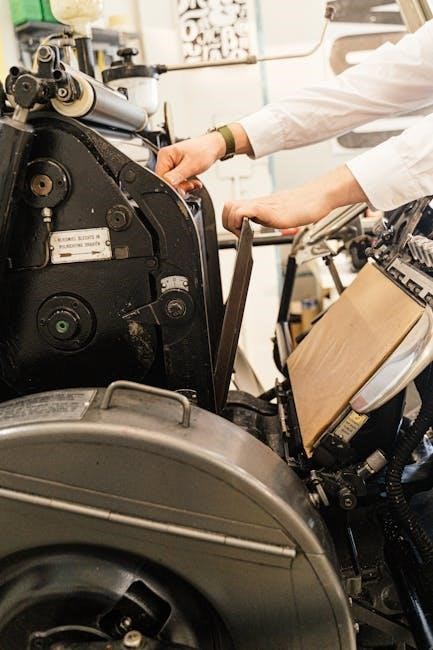
Fuel and Hydraulic Systems
The Cessna 172N Parts Manual details the fuel system’s components, layout, and hydraulic system maintenance. It ensures proper functioning and safety through detailed procedures and part specifications.
5.1 Fuel System Components and Layout
The Cessna 172N’s fuel system includes wing tanks, fuel pumps, selectors, and lines. Wing tanks store fuel, while pumps ensure flow. Selectors direct fuel from tanks to engine, and lines connect components. Regular inspection of seals and connections is crucial for leak prevention. Proper maintenance, as outlined in the manual, ensures optimal fuel flow and system reliability, essential for safe flight operations and performance.
5.2 Hydraulic System Overview and Maintenance
The Cessna 172N’s hydraulic system supports landing gear operation and flap controls. It includes a hand pump, reservoir, and distribution lines. Regular inspection of fluid levels, hoses, and connections is essential. Maintenance involves checking for leaks, replacing worn seals, and ensuring proper system pressure. Adhering to the manual’s guidelines prevents failures and ensures smooth functionality during critical flight phases, enhancing overall aircraft reliability and safety.
5.3 Fuel and Hydraulic System Safety Precautions
Handling fuel and hydraulic systems requires strict adherence to safety protocols. Always wear protective gear and ensure proper ventilation to avoid fume inhalation. Use approved tools and follow manual instructions to prevent system contamination. Regularly inspect for leaks and wear, addressing issues promptly. Never mix hydraulic fluids with fuel, and store them separately. Proper grounding techniques must be employed to prevent static discharge. These precautions ensure safe maintenance, reducing risk of accidents and maintaining system integrity for reliable aircraft performance.
Propeller and Control Surfaces
This section covers the Cessna 172N’s propeller and control surfaces, detailing their components, functions, and maintenance procedures to ensure optimal aircraft performance and safety.
6.1 Propeller Types and Maintenance
The Cessna 172N features a fixed-pitch propeller, designed for optimal performance across various flight conditions. Regular maintenance includes inspections for cracks, erosion, and balance checks. Proper cleaning and application of protective coatings prevent corrosion. The propeller hub and blades must be serviced as per manufacturer guidelines to ensure smooth operation and longevity. Adhering to the recommended maintenance schedule is crucial for safety and efficiency, as outlined in the parts manual.
6.2 Ailerons, Elevators, and Rudder Components
The Cessna 172N’s flight control surfaces include ailerons, elevators, and a rudder, each designed for precise aircraft maneuverability. These components are constructed from durable materials to withstand various flight conditions. Regular inspections focus on hinge integrity, control surface alignment, and cable tension. Any signs of wear or damage must be addressed promptly to maintain optimal control and safety. The parts manual provides detailed diagrams and specifications for accurate maintenance and replacement of these critical flight control components.
6.3 Control Surface Maintenance and Repair
Regular maintenance of control surfaces is crucial for ensuring precise aircraft control. The manual outlines procedures for inspecting ailerons, elevators, and rudder for wear or damage. Lubrication of hinge pins and cable tension checks are routine tasks. Any signs of corrosion or excessive play require immediate attention. Repair techniques include replacing worn bushings or skin panels, with guidelines for proper riveting and sealing. Adhering to factory specifications ensures optimal performance and safety, emphasizing the importance of using genuine Cessna parts for all replacements.
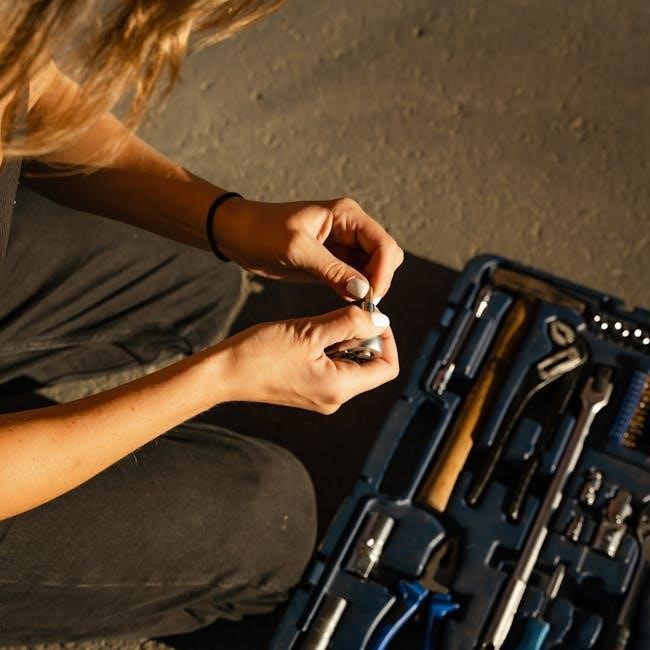
Environmental and Cooling Systems
The Cessna 172N’s environmental and cooling systems ensure cabin comfort and engine performance. Regular inspections of heat exchangers, fans, and ducts are essential to prevent overheating and corrosion, ensuring reliability and safety during flight operations.
7.1 Heating and Cooling Systems
The Cessna 172N incorporates a reliable heating and cooling system to maintain cabin comfort and engine performance. The heating system utilizes a combustion heater, such as the Janitrol, to warm the cabin, with a blower motor circulating air through ducts and vents. The cooling system relies on airflow through engine cowl flaps and oil cooler intakes to regulate engine temperature. Proper maintenance of these components, including inspections of ducts and cowl flap mechanisms, ensures efficient operation and prevents overheating, which is critical for both engine longevity and passenger comfort during flight.
7.2 Air Conditioning and Ventilation
The Cessna 172N features a ventilation system designed to maintain a comfortable cabin environment. Fresh air enters through vents and intakes, circulating naturally or via optional fans. The system includes airflow controls, allowing pilots to regulate temperature and air distribution. Proper maintenance of seals, vents, and ducts ensures efficient ventilation, preventing fogging and promoting passenger comfort. While the 172N does not typically include air conditioning, aftermarket systems can be installed for enhanced comfort in hot climates, with detailed specifications outlined in the parts manual for compatibility and installation guidelines.
7.3 Cooling System Maintenance and Service
The Cessna 172N cooling system relies on airflow and components like baffles, shrouds, and cowl flaps to regulate engine temperature. Regular inspection of hoses, coolant levels, and radiator condition is essential. Cleaning the oil cooler and intake screens prevents debris buildup. Proper cowl flap adjustment ensures efficient cooling, while adhering to recommended service intervals maintains system performance. Always use genuine parts and follow manual guidelines to prevent overheating and ensure reliability during flight operations, as outlined in the parts manual for the Cessna 172N aircraft.

Interior and Safety Features
The Cessna 172N features a durable cabin interior designed for comfort and safety, equipped with essential emergency systems, fire extinguishers, and first aid kits for occupant protection.
8.1 Cabin Interior and Upholstery
The Cessna 172N cabin interior is designed for comfort and durability, featuring adjustable seating for both pilot and passengers. Upholstery is made from high-quality materials, ensuring longevity and aesthetics. The interior layout includes storage compartments, cup holders, and a glove box for convenience. Seats are equipped with seatbelts and shoulder harnesses for safety. The cabin’s noise reduction features enhance the flying experience. Maintenance of the interior involves cleaning and inspecting upholstery, while replacement parts are readily available for wear and tear. The design emphasizes practicality and passenger comfort.
8.2 Safety Equipment and Emergency Systems
The Cessna 172N is equipped with essential safety equipment, including a fire extinguisher, emergency locator transmitter, and first aid kit. The aircraft features a robust emergency landing system, ensuring safe touchdown in critical situations; The manual details proper maintenance of emergency systems, such as regular inspections of seatbelts and harnesses. Additionally, the 172N includes features like emergency exits and a crashworthy fuel system. Pilots are advised to familiarize themselves with these systems to ensure preparedness for any unforeseen circumstances during flight operations.
8.3 Interior Maintenance and Upgrades
The Cessna 172N interior requires regular maintenance to ensure comfort and functionality. The manual provides detailed instructions for cleaning and replacing upholstery, carpets, and headliners. Proper care of plastic components and seatbelts is emphasized to maintain appearance and safety. Upgrades, such as installing modern avionics or ergonomic seating, can enhance the flying experience. The manual also offers tips for DIY modifications while adhering to factory standards. Regular inspections and timely replacements are crucial to preserve the cabin’s integrity and provide a safe, enjoyable environment for pilots and passengers.

Maintenance and Repair Guidelines
The Cessna 172N Parts Manual outlines essential maintenance and repair procedures to ensure aircraft safety and performance. Regular inspections, timely part replacements, and adherence to factory guidelines are critical for optimal functionality and compliance with aviation standards.
9.1 Scheduled Maintenance Requirements
The Cessna 172N Parts Manual emphasizes adherence to factory-recommended maintenance schedules to ensure aircraft safety and performance. Regular inspections, including 100-hour and annual checks, are mandatory. These inspections cover airframe, engine, propeller, and system components. Compliance with airworthiness directives and regulatory standards is essential. Proper documentation and timely replacement of worn or damaged parts are critical to maintaining airworthiness. Following the manual’s guidelines ensures optimal functionality and extends the aircraft’s service life, aligning with safety and operational excellence standards.
9.2 Troubleshooting Common Issues
The Cessna 172N Parts Manual provides detailed troubleshooting guides for common issues, such as engine malfunctions, electrical system faults, and hydraulic leaks. It outlines step-by-step procedures for diagnosing problems, including checking spark plugs, wiring connections, and fluid levels. The manual emphasizes the importance of early detection to prevent minor issues from escalating. By following the diagnostic techniques and repair recommendations, maintenance professionals can ensure the aircraft remains airworthy and operational, maintaining safety and efficiency during flight operations.
9.3 Repair Techniques and Best Practices
The Cessna 172N Parts Manual emphasizes the use of genuine parts and adherence to factory-recommended repair techniques to ensure reliability and safety. Proper torque specifications, lubrication, and alignment are critical during repairs. Regular inspection of engine components, such as magnetos and spark plugs, is essential. Best practices include following detailed diagrams, using specialized tools, and documenting all maintenance activities. Thorough testing after repairs ensures system functionality. Adhering to these guidelines minimizes wear and tear, extending the aircraft’s service life and maintaining its airworthiness.
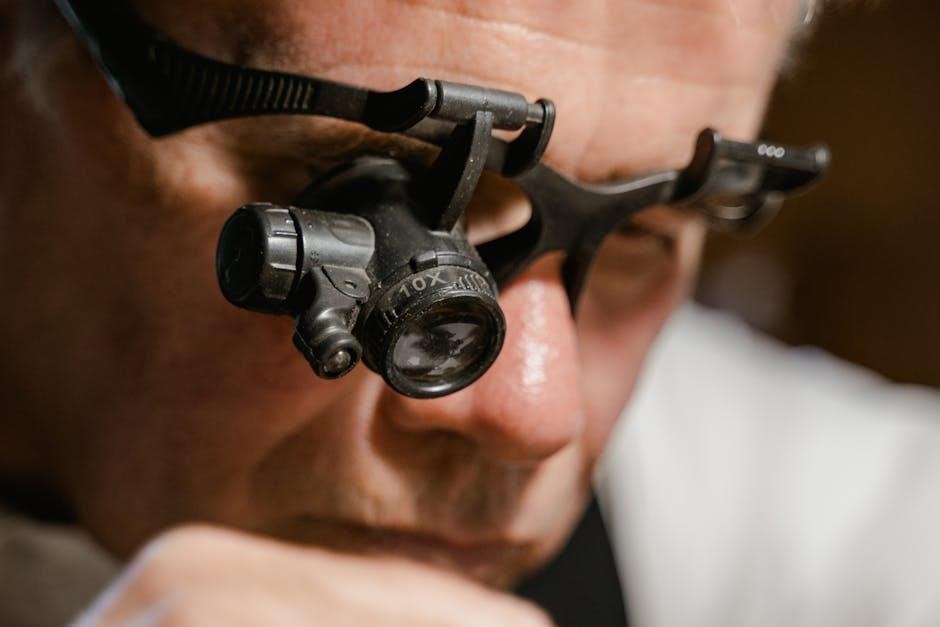
Instrument Panel and Cockpit Components
The Cessna 172N instrument panel features primary flight instruments, navigation tools, and communication systems, with detailed diagrams and maintenance guidelines for optimal cockpit functionality and safety.
10.1 Primary Flight Instruments
The Cessna 172N’s primary flight instruments include the airspeed indicator, altimeter, heading indicator, turn coordinator, and tachometer; These instruments provide essential data for navigation and flight control, ensuring safe operations. The airspeed indicator displays flight speed, while the altimeter shows altitude. The heading indicator offers directional information, and the turn coordinator aids in balanced turns. Regular calibration and maintenance of these instruments are crucial for accurate readings, as outlined in the parts manual;
10.2 Navigation and Communication Instruments
The Cessna 172N features a range of navigation and communication instruments, including the KY 196A digital Nav/Com radio, KI 208 VOR/LOC indicator, and KI 525A HSI (Horizontal Situation Indicator). These systems enable precise navigation, communication with air traffic control, and adherence to flight plans. The HSI integrates heading, course, and deviation data for enhanced situational awareness. Regular maintenance, as detailed in the parts manual, ensures optimal performance and reliability of these critical systems, essential for safe and efficient flight operations.
10.3 Instrument Panel Maintenance and Upgrades
Regular maintenance of the Cessna 172N instrument panel involves inspecting and replacing worn or faulty components, such as annunciator bulbs and instrument bezels. Upgrades, like modern glass cockpit installations, enhance functionality and safety. The parts manual provides detailed procedures for panel disassembly, wiring checks, and installation of new avionics. Proper calibration and testing ensure instruments perform accurately. Dealers with factory-trained technicians are recommended for complex upgrades to maintain airworthiness and compliance with regulatory standards, ensuring optimal performance and reliability in flight operations.

Legal and Regulatory Compliance
Adhering to airworthiness directives and regulatory requirements ensures compliance with safety standards. Proper documentation and record-keeping are essential for audits and maintaining legal operational status of the aircraft.
11.1 Airworthiness Directives and Compliance
Airworthiness directives (ADs) are mandatory regulations issued by aviation authorities to address safety-critical issues. Compliance ensures the Cessna 172N remains airworthy and safe for operation. ADs often require inspections, modifications, or replacements of specific parts. The FAA and other regulatory bodies publish these directives, which must be strictly followed. Non-compliance can lead to legal penalties or grounding of the aircraft. Proper documentation of AD compliance is essential for maintaining legal operational status and ensuring passenger safety. Regular reviews of ADs are crucial to stay updated on new or revised requirements.
11.2 Regulatory Requirements for Maintenance
Maintenance of the Cessna 172N must comply with regulatory guidelines set by aviation authorities like the FAA. These requirements ensure adherence to safety standards and extend the aircraft’s operational life. Compliance involves periodic inspections, use of approved parts, and following factory-recommended procedures. Service bulletins and airworthiness directives must be reviewed and implemented as required. Proper documentation of all maintenance activities is mandatory to maintain airworthiness certification and ensure legal compliance. Adhering to these regulations is critical for safe and reliable aircraft operation.
11.3 Record-Keeping and Documentation
Accurate and detailed record-keeping is essential for maintaining the Cessna 172N. Proper documentation ensures compliance with airworthiness standards and provides a clear history of maintenance, repairs, and inspections. This includes logging all parts replacements, service intervals, and compliance with airworthiness directives. Detailed records help track the aircraft’s condition over time, ensuring transparency and accountability. They also facilitate troubleshooting and provide valuable information for future maintenance. Proper documentation is a critical component of safe and efficient aircraft operation, supporting long-term reliability and regulatory compliance.
The Cessna 172N Parts Manual is a vital resource for ensuring safety, proper maintenance, and regulatory compliance, contributing to the aircraft’s reliability and operational integrity over time.
12.1 Summary of Key Points
The Cessna 172N Parts Manual is an essential resource for aircraft maintenance, detailing components, repair procedures, and safety guidelines. It covers engine specifications, airframe structures, avionics, fuel systems, and more. The manual emphasizes adherence to factory-recommended practices to ensure airworthiness and operational safety. Proper use of the manual aids in troubleshooting, scheduled maintenance, and regulatory compliance. Its organized structure, including detailed diagrams and part lists, simplifies complex tasks. By following the manual, technicians can maintain the aircraft’s performance, reliability, and longevity effectively.
12.2 Importance of Adhering to the Parts Manual
Adhering to the Cessna 172N Parts Manual ensures compliance with safety standards, prevents maintenance errors, and guarantees aircraft reliability. Proper procedures maintain airworthiness, reduce risks, and extend lifespan. Deviations can lead to legal issues and safety hazards. The manual provides precise instructions for repairs, ensuring all components function optimally. Following guidelines helps in troubleshooting and maintaining the aircraft’s value. Compliance with the manual is crucial for operational safety and legal requirements, ensuring the aircraft remains in peak condition for years of reliable service.
12.3 Final Thoughts on Maintenance and Safety
Maintenance and safety are paramount for the Cessna 172N, ensuring reliability and performance. Regular inspections and adherence to the parts manual guarantee compliance with safety standards. Proper maintenance prevents errors, extends lifespan, and ensures airworthiness. Staying informed about updates and best practices is essential for safe operations. By prioritizing maintenance, operators can trust the aircraft’s performance, ensuring a safe and reliable flying experience for years to come.



About the author